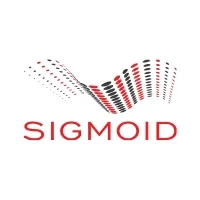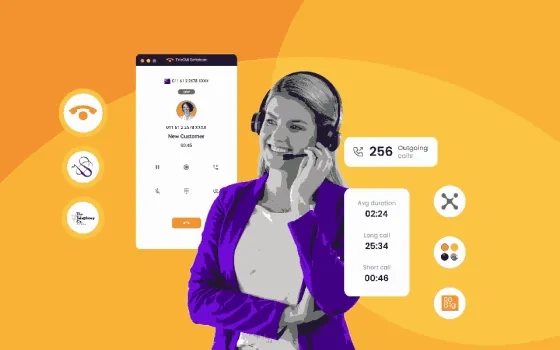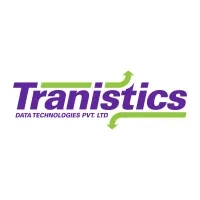It’s always worth getting a fresh perspective of your customers, their sentiments about your products, business, or brand. It helps you to discover new business trends and improve your products, services, and brand. Gauging Customer Satisfaction thrives on customer connections and elevating excellent customer service.
There are a lot of Customer Experience and Satisfaction Metrics that cannot only enhance the bottom line of your whole business but also improve your support quality. Here are some customer satisfaction metrics that help you understand what it’s measuring and why it matters.
Customer Satisfaction Metrics
Customer Satisfaction Metric is a kind of KPI (Key Performance Indicator) that measures how a business or a company meets customer expectations. It also works as an essential indicator of consumer purchase intentions and loyalty.
Why Customer Satisfaction Metric is Important
- Improves Customer Loyalty
Using customer satisfaction metrics, especially Net Promoter Score, can help you to detect your satisfied and unsatisfied customers. When you ask feedback and follow up with your satisfied customers, it turns them to be loyal. If you do the same with dissatisfied customers, it may turn them into happy and loyal customers. - Improves Business Revenue & Profit
Business revenue and profit come from your customers. If your customers are happy and satisfied this will augment your revenue. But if they are loyal and recommend you as a prominent brand to their relatives and friends, this will improve the profit rate of your business. Having unhappy customers is not an issue unless you could able to retain them to your business. 5% of customer retention will increase by 25% to 95% of profits. - Reduces Customer Churn Rate
Business growth can also be determined by measuring the inflow and outflow of the customers in the business. That’s what Customer Churn Rate helps you to do. Churn rate refers to the number of customers who left your company due to bad customer experience. These churned customers are a risk to your brand image, as they spread negative words of mouth and do negative publicity of your brand and business. So, when you gauge the churn rate of your business regularly, it helps you to put control on the churning of your customers.
Types of Customer Satisfaction Metrics
There are 3 metrics based on which you can gauge customer satisfaction:
- Net Promoter Score (NPS)
- Customer Satisfaction Score (CSAT)
- Customer Effort Score (CES)
1. Net Promoter Score
The Net Promoter Score is the leading customer satisfaction metric that measures customer satisfaction in terms of loyalty. It ranges from -100 to 100 and measures the willingness of customers to recommend a company, it’s products or services to others. NPS can be measured based on one simple question: “How likely would you be to recommend our products/services to a friend?” Customers range their willingness of recommendation on the scale of 0-10. Based on their responses, customers will be segregated into three categories.
# Promoters – 9-10 Score
# Detractors – 0-6 Score
# Passives – 7-8 Score
NPS can be conducted, calculated, and managed by the NPS Software.
| Formula to calculate NPS Net Promoter Score (NPS) = % Promoters – % Detractors |
2. Customer Satisfaction Score (CSAT)
Satisfaction is a game-changing element in a business. If your customers are satisfied they will remain loyal to your brand. And a loyal customer will never leave your brand, even if you sell the product or services at a higher price. The business needs to keep a check on the satisfaction level of the customers at every touchpoint throughout the customer journey. The Customer Satisfaction Score (CSAT) is another customer satisfaction metrics that enable you to gauge how satisfied customers are with your organization’s products or services. CSAT can be conducted using the simple question – “How satisfied were you with your experience?” Here customers range their satisfaction level either on the scale ranges 1 – 3, 1 – 5, or 1 – 10 or on the scale of agree/disagree scales, stars, or smileys.
| Formula to calculate the CSAT Customer Satisfaction Score (CSAT) = Number of Satisfied Customers ÷ Total Number of Respondents. |
3. Customer Effort Score (CES)
It is not only the quality of products or services that determine customer satisfaction, but other customer support services also play a crucial role. Customers are also getting influenced by the way you are interacting with them, way of solving queries, and lastly how long you are taking to get their issues resolved. Here comes in Customer Effort Score (CES). This metric helps you to gauge the levels of effort your customers have to put to get their queries solved. CES can be conducted using a simple question – To what extent do you agree with the following statement: The company made it easy for me to handle my issue.
| Formula to calculate CES Customer Effort Score (CES) = Addition of all customer effort scores ÷ Total number of respondents. |
NPS vs CSAT vs CES
This is the hot argument that which one is best customer satisfaction metrics
To understand the significance of the NPS vs CSAT vs CES, we need to know the reason why these metrics came into existence.
Customer Satisfaction Score (CSAT) was the first customer experience metric incepted in the market as the most predictive power metric for customer loyalty until 2003. Then Fred Reichheld introduced another metric named Net Promoter Score (NPS) to measure customer loyalty and gained immense popularity than CSAT. NPS is considered to be more predictive of customer loyalty. In 2008, the Corporate Executive Board (CEB), now Gartner, introduced the Customer Effort Score (CES) to measure the effort level of the customers they are putting to interact with you to get their queries solved. CES gained popularity in 2010 when Harvard Business Review stated that measuring effort score is much more important than delighting your customers.
Conclusion
Net Promoter Score (NPS) is a great metric to measure Customer Loyalty. Whereas, Customer Satisfaction Score (CSAT) gauges Customer Satisfaction and Customer Effort Score (CES) is perfect for measuring the effort level of customers.
Benefits of Net Promoter Score (NPS)
If you want to ensure a level ahead of customer experience & satisfaction and encourage your customers to remain loyal, then you should use NPS. Let’s explore other benefits of using the NPS metric.
1. Measure Customer Loyalty
Customer loyalty is very important for the growth of revenue and profit. 66% of US consumers make decisions based solely not on the product and its price, they are also considering the loyalty factor as well. To make your customers loyal, you need to understand their sentiments towards your products, services, or business. You can simply gauge their loyalty through the NPS Survey. You can ask a standard NPS question to know their willingness to recommend your brands to others. Based on the score you can ask various follow-up questions to understand their sentiments more profoundly. NPS Software can help you to drive accurate customer-powered data.
2. Detects your detractors, passives, and promoters
It is important to know who are happy, unhappy, and neutral customers. NPS system helps you to track your detractors, passives, and promoters. When you ask them to scale their willingness for the recommendation on a scale of 1 to 10, they score you based on the experience. If they give you the score: 0-6 are detractors, 7-8 are passives, and 9-10 are promoters. Since you’ve identified your NPS audiences, now you can easily follow up with them and solve their queries to improve their experience and turn them into loyal customers.
3. Instant Indication of Customer Satisfaction
NPS helps you to track instant customer satisfaction. If you want to capture the instant real-time customer satisfaction after any event or transaction, then Transactional NPS Surveys help you to customer satisfaction immediately after the specific interaction or transaction.
There are various touchpoints in the customer experience journey where you need to capture the feedback. And if you capture the recent experience that would be more authentic and useful. You can simply pose a question – “How would you rate our company on recent experience?” Some important touchpoints where Transactional NPS Surveys can be triggered:
- Post-Order Survey – If your customers have placed any orders or done any business transaction, immediately send them Transactional NPS Survey via SMSes or Email. This helps you to get accurate and real-time customers’ reactions towards the recent transaction.
- Post Ticket or Call Raised – Post-interaction surveys can help you to evaluate your customer support services. Once you conclude the call with the customers, immediately give them a Transactional NPS Survey to know what customers think about your customer support services. With this, you can also gauge the performance of the customer service agents.
- Post-Delivery Survey – You can share post-delivery transactional NPS surveys either through SMSes, Emails, or encoding QR Codes on the boxes or bills. This provides real-time analysis about your delivery & logistic services.
NPS Software offers a myriad of features, one among them is APIs & Webhooks. Various NPS Software are integrated with various third-party tools like Intercom, Segment, Zapier, Twilio, Plivo, and custom APIs. These integrations help you to automate the trigger of your NPS surveys at different touchpoints.
4. Improves the quality of your product and service
If you want to lure customers to your business and ensure complete satisfaction, then you need to make your product or service more customer-oriented. How? NPS Survey can help you to ask customer feedback effectively. The NPS Survey comprises ideally a two-part questionnaire:
- The Net Promoter Score Question – How likely is it that you would recommend [Organization/Product/Service] to a friend or colleague?
- Follow-up Question – This part of the NPS survey focuses on the reasoning behind the customers’ scores. When you ask the reason for the score you will get to know about your products and services in-depth from a different perspective.
You can effectively use the reasoning of the score as per the audiences:
- Detractors – When you ask the reason for the score from your unhappy customers, they provide you with the constructive criticisms that help you to improve the quality of the product and service.
- Passives – When you ask the reason for the score from the passives, you’ll be able to track that point or drawbacks that make your passives reluctant to become a promoter.
- Promoters – Asking for the reason for the score from the promoters can help you to know the strengths of your products and services. It also engages you with your customers and encourages them to share the positive word of mouth for your brand.
The data collected from the NPS survey can be easily converted into proactive and customer-driven strategies to enhance product development potential.
5. Boosts the long-term customer relationship
We’ve seen in the third point that NPS can be used as a transactional survey where customers record their feedback based on the recent experience. NPS can also be used as Relationship Surveys to know the general sentiments of your customers about your company and brand. It helps you to know how your customers see your business for the long-term. Relationship surveys can be conducted by a simple question – “How likely are you to recommend us to a friend or family on a scale of 0 to 10?” Relationship NPS Survey not only engages you with your customers but also develops a healthy long-term customer relationship.
6. Reduces the churn rate by following up with your detractors
Achieving business growth is impossible with churn. You need to evaluate the churn rate of your business. Churn Rate is a KPI that calculates the number of customers who leave your business over a specific period. By calculating churn, you will quickly identify your detractors and follow-up with them to solve their queries and improve their experience.
How to calculate the Customer Churn Rate
| To calculate the Customer Churn Rate, you can use the given formula: Churn Rate % = Number of Churn Customers ÷ Total Number of Customers ? 100 Total Number of Customers = Number of existing customers + Number of acquired new customers – Number of churned customers |
7. Enables to close the feedback loop
The main benefit of deploying the Net Promoter Score to survey the customers is that it enables you to close the feedback loop. When your detractors give you a bad score, they will not stop here only. They spread bad word of mouth for your brand because 75% of consumers stated that they share a negative experience with their friends and colleagues, whereas 42% of them stated they’d recommend a product/service.
So, it is important to follow-up with your detractors and solve their queries to improve their customer experience. This may turn them to promoters as Lee Resources stated that 70% of detractors will do business with you again if you fix an issue they’ve complained about.
To close the feedback loop with your detractors, you need to understand the Customer Feedback Loop and the two types of customer issues in customer feedback loop anatomy:
- Recurring Customer Issue – These are the general issues that usually happen with many customers. These issues could be general like bad feedback about the hotel’s washroom and its cleanliness, etc. these issues can be solved on the business level.
- Personal Customer Issue – These issues are specifically happening with individuals based on the personal opinion of the customers. These personal issues can be solved by following up with the customers personally via SMSes, Emails, or Personal Phone Calls.
On following up with the detractors you can easily track the drawbacks that they found using your products and services? Based on the conversation, you can solve the queries of your detractors and improve their experience to turn them to promoters. This further helps you to close the feedback loop on a positive note.
What’s Next
Net Promoter Score is a standalone Customer Satisfaction Metric that enables you to do NPS feedback management on steroids. All you need to do is to select an NPS Software that suits your requirements. Here are the considering features of the ideal NPS Software:
- Customize NPS Surveys
- Add Follow Up Question
- Add Logic to NPS Surveys
- Distribute NPS Surveys via various Channels
- Measure eNPS
- Measure other CX Metrics
- Real-time Alerts for Team
- Automated Notifications for Respondents
- Track NPS in real-time
- Access in-depth NPS Reports
- Create Tasks & Close the Loop
- Use APIs & connect with tools
















